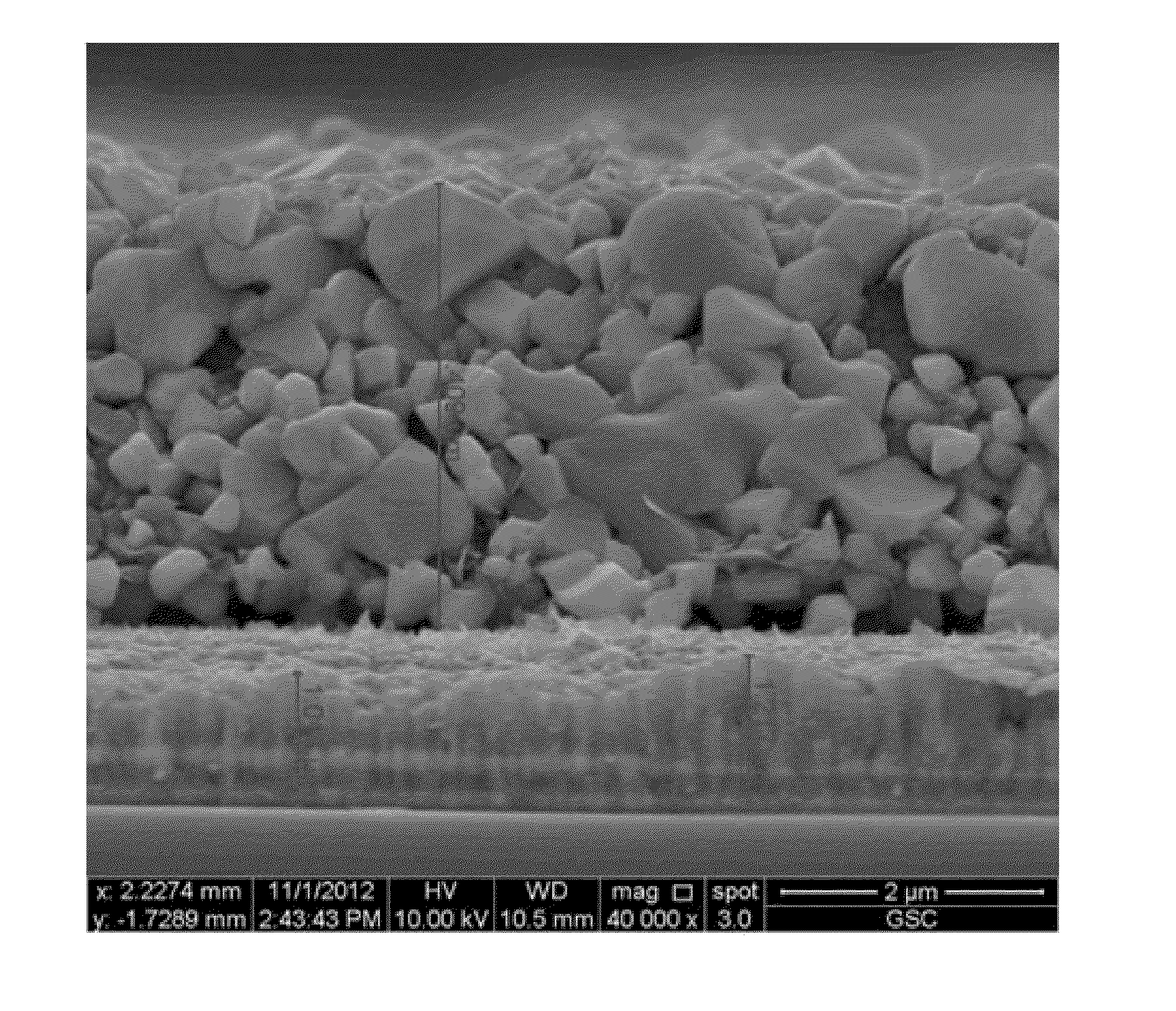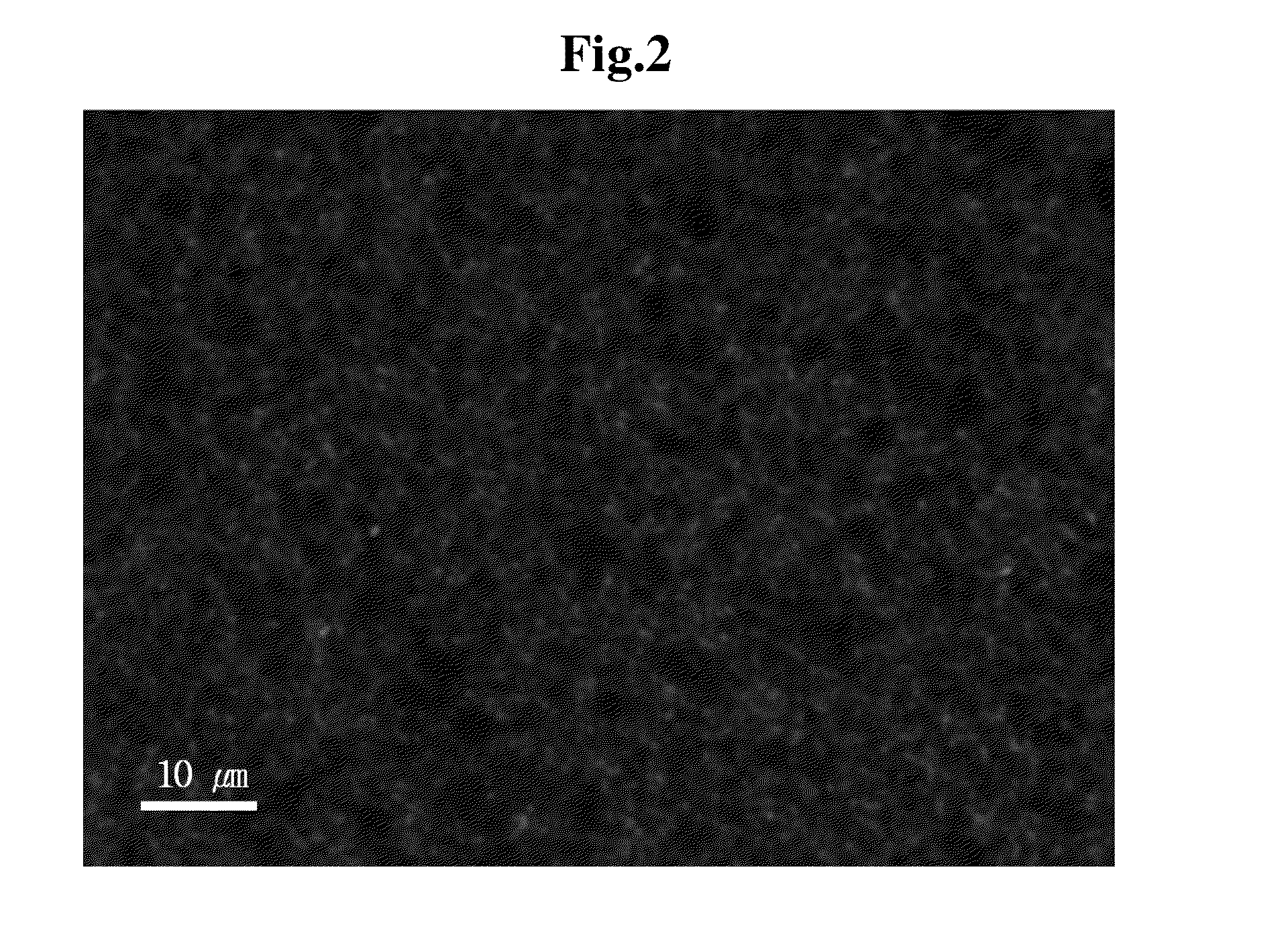Cigs light-absorbing ink and method for preparing cigs light-absorbing layer
a technology of cisor cigs and light-absorbing ink, which is applied in the direction of inks, sustainable manufacturing/processing, final product manufacturing, etc., can solve the problems of high material cost, complicated fabrication process, and low conversion efficiency of polycrystalline silicon solar cells, so as to improve processing speed, processing cost, and the effect of forming large-area products
- Summary
- Abstract
- Description
- Claims
- Application Information
AI Technical Summary
Benefits of technology
Problems solved by technology
Method used
Image
Examples
example 1
Preparation of CIS Light-Absorption Layer
[0062]After a starting material was prepared by mixing 400 mg (1.52 mmol) of Cu(acac)2 with 628 mg (1.52 mmol) of In(acac)3, 96 mg (3.04 mmol) of sulfur was mixed with the starting material, and 1.3 ml of acetylacetone and 2.7 ml of ethanolamine were mixed with the mixture to form a complex. Next, a light-absorption ink was prepared by stiffing the complex at 140° C. for 1 hour.
[0063]The prepared light-absorption ink was coated onto a Mo glass substrate by doctor-blade coating or spin-coating, and then heat-treated at 200° C. for 4 minutes and at 350° C. for 30 minutes under an air atmosphere, thereby obtaining a light-absorption layer thin-film.
[0064]The light-absorption layer thin-film was heat-treated at 550° C. for 15 minutes under a Se atmosphere, thereby forming a CIS light-absorption layer thin-film.
example 2
Preparation of CIGS Light-Absorption Layer
[0065]A CIGS light-absorption layer thin-film was prepared in the same manner as in Example 1, except that a starting material was prepared by mixing 436 mg (1.06 mmol) of In(acac)3 and 168 mg (0.46 mmol) of Ga(acac)3, instead of 628 mg (1.52 mmol) of In(acac)3.
PUM
 Login to View More
Login to View More Abstract
Description
Claims
Application Information
 Login to View More
Login to View More - R&D
- Intellectual Property
- Life Sciences
- Materials
- Tech Scout
- Unparalleled Data Quality
- Higher Quality Content
- 60% Fewer Hallucinations
Browse by: Latest US Patents, China's latest patents, Technical Efficacy Thesaurus, Application Domain, Technology Topic, Popular Technical Reports.
© 2025 PatSnap. All rights reserved.Legal|Privacy policy|Modern Slavery Act Transparency Statement|Sitemap|About US| Contact US: help@patsnap.com



